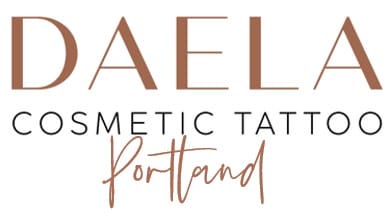After Care for Dr Elizabeth's Services
Complete list of after care for facial fillers, PRF, Sculptra, and Wrinkle Relaxers
About After Care
Following aftercare instructions for wrinkle relaxers (such as Botox) and fillers (like hyaluronic acid fillers) is crucial for achieving optimal results and ensuring safety. Aftercare helps to minimize potential side effects and complications, promotes proper healing, and extends the longevity of the treatment. Here’s why aftercare is important for both types of procedures:
Minimizing side effects.
Optimizing results.
Preventing complications.
Ensuring safety.
Prolonging longevity.
Dr. Elizabeth Ann McElligott ND, CNS is a licensed, insured, board-certified doctor practicing independently at DAELA Cosmetic Tattoo in Portland, Oregon.

After Care for Facial Fillers, PRF, and Wrinkle Relaxers
Precare for PRF, Wrinkle Relaxers & Fillers
4 DAYS Before your appointment:
- Avoid alcoholic beverages for 4 days prior. *including red wine*
3 DAYS Before your appointment:
- Pre-treat with Arnica 3 days before your treatment by dissolving 5 pellets under your tongue, 3 times a day.
- To lessen your chance of irritation & redness, pause the use of Retinol & exfoliating acids 3 days before your treatment & for 3 days after.
- Of course, we should always pay attention to hydration, but it’s even more important before an injection appointment. Start Hydrating 3 days before your appointment. Drink at least 64 oz of water
2 DAYS Before your appointment:
- Avoid Omega 3s, Ibuprofen, Vitamin E, & Aspirin for 2 days prior.
Facial Filler & PRF After Care
Dermal filler after care
General Comments:
- Immediately after your treatment, there may be slight redness, swelling, tenderness, and an itching sensation in the treated area. This is a normal result of the injection. The inconvenience is temporary and generally disappears in a few days. If you experience redness that doesn’t resolve, crusting or oozing contact the office immediately.
- The initial swelling after treatments may last longer than two days. Some patients experience swelling for about a week and the injected area can look somewhat uneven during this time. This means that the result directly after the treatment should not be seen as the final result. It may take 2-4 weeks to even out.
- After 3-6 weeks, we may want to re-evaluate the need for additional treatment. Vertical lip lines will not go away completely, but they will soften in appearance.
- After any treatment with fillers, you may FEEL lumpy and/or bumpy for a few weeks or even months afterward. This is normal. If you can still feel a lump or bump after two weeks, it may need to be massaged or dissolved.
- The filler gradually dissolves. The correction does not last forever. Many people choose to be treated again within 4-6 months of the original treatment.
After the Procedure:
- You may gently apply the ice pack provided to you to the treated area for 10 minutes an hour for the first 3 hours following the injection. Apply lightly, do not use too much pressure.
- Avoid touching the treated area for 12 hours following the injection. After that, light makeup can be applied, and the area can be gently washed with soap and water.
- Until the initial swelling and redness have resolved, do not expose the treated area to intense heat (i.e., sunbathing or tanning bed) or extreme cold.
- If you have previously suffered from facial cold sores, there is a risk that the needle punctures could contribute to another eruption of cold sores.
- If you are using aspirin or any similar medication, be aware that these may increase the bruising and bleeding at the injection site. You may take Tylenol for discomfort. Avoid all Ibuprofen and medications in that family (Advil, Aleve, Excedrin).
- Please avoid alcohol and exercise for 24 hours following the injection and be sure to drink plenty of water to stay hydrated.
- To avoid bruising, take Arnica orally or topically, and continue for two more days post-injection. Take 30c Arnica, 4 pellets by mouth 4 times per day, and apply Arnica cream every 2 hours.
Wrinkle Relaxer After Care
Here are a few things to keep in mind before returning to your normal activities after Botox or Dysport:
Ice Is OK
Some people experience swelling and discomfort around injection sites. You can safely apply a cold compress on treated areas to relieve discomfort and minimize swelling. However, don’t put pressure on the cold compress. Just gently lay the compress on the swelling. Slight bruising and swelling near injection sites are commonly reported side effects of injections that diminish within 48 hours after treatment. Taking NSAIDs or applying heat to swollen injection areas would not only worsen discomfort, but it could also cause migration. This is strongly advised against.
Exercise Your Face
About an hour after you receive injections, exercise your facial muscles by frowning, squinting, smiling, and raising your eyebrows for 30 seconds. Repeat these exercises several times throughout the day to help the solution infiltrate targeted muscles. However, be aware that you don’t have to exercise your face to get the same great results from. Moving facial muscles and performing recommended facial exercises may simply expedite the reduced appearance of wrinkles and fine lines by approximately 1 day.
Wait a Couple of Days Before Heading Back to the Gym
Strenuous activity increases heart rate and blood flow. While it’s fine to take a leisurely walk after receiving injections, stay off the Ellipticals and Nordic Tracks for at least 24 hours. Heavy exercise may inadvertently spread to other areas, which could decrease the effectiveness and cause unintended side effects. Strenuous exercise after treatment could also increase the risk of swelling and bruising around the treatment areas.
Avoid Putting on Cosmetics for the rest of the day.
Applying liquid foundation, blush, face powder, eyeshadow, and even eyebrow pencil can stimulate the skin enough to cause the dispersal to unintended areas. People who get injections for medical reasons should also avoid pressing on injection sites and the skin surrounding the injection sites. It is perfectly fine to apply cosmetics the following day.
No Lying Down or Leaning Forward Significantly for 4 Hours
Lying down or bending over for more than a few minutes following treatment may disperse the solution from its intended site. If you are someone who bruises easily, sitting upright can also help reduce bruising by preventing increased blood flow to your face.
Try to Sleep on Your Back
The first night after your treatment, sleep on your back as much as possible to minimize pressure on facial muscles. Of course, if your injections were meant to reduce forehead wrinkles or brow furrowing, you won’t have to worry about the pressure of your face against your pillow. However, injections for treating crow’s feet are typically given near or on the side of the face. If you tend to sleep on your side, try placing pillows next to your body to stop you from turning over while sleeping.
Don’t Drink Alcohol Before or After Injections
Beer, wine, and hard liquor contain ethanol, a substance that dilates blood vessels and increases blood pressure. When blood vessels expand, this allows more blood to flow rapidly throughout your body. Increased blood flow means possible worsening of swelling and bruising at and around injection sites. A good rule of thumb regarding alcohol: Avoid alcohol 48 hours before and 48 hours after treatment.
Put Off Other Skin Treatments
Wait for at least 24 to 48 hours before you get facials, microdermabrasion, laser skin therapy, or massages.
Relax in the Shade
Avoid full sun exposure for the rest of the day after receiving injections. Any kind of heat (including hot showers) will increase your blood pressure and promote bruising. If possible, avoid going out in the sun for one to two days to fully reduce the potential of migration due to sunlight and heat. Also, stay out of tanning beds, saunas, and hot tubs for at least 24 hours. (When it’s safe to go back into the sunshine, be sure to use a high-quality sunscreen.)
After care and Medications
Most people do not need to take any painkillers such as acetaminophen or ibuprofen after having injections because any discomfort is almost always minimal and temporary. Although rarely reported, headaches may emerge in some people following treatments, in which case acetaminophen or ibuprofen can be taken. However, if you are taking a prescription blood thinner like Warfarin, do not stop taking it until you have talked to your doctor.
Sculptra After Care
Don’t bend over lay down for 4 hours.
Massage treated areas (upward strokes) 5 times per day for 5 minutes for 5 days following the injections!! This is an important step to ensure best results from your Sculptra treatment and reduce possible treatment side effects.
You may apply a cool compress to the injection site(s) for up to 48 hours
Avoid excessive sun or heat exposure for 24 hours post-treatment
Do not exercise for 24 hours post-treatment
Avoid saunas for 24 hours post-treatment
If you are experiencing swelling: apply Arnica cream/gel to the area or take oral Arnica to speed up healing.
If you are experiencing bruising: apply arnica cream every 2 hours.
Why is it important to follow after care for facial fillers & wrinkle relaxers?
Minimizing side effects: Aftercare instructions typically include guidelines on how to reduce common side effects such as swelling, bruising, redness, and discomfort. Following these instructions can help minimize these side effects and improve your overall comfort after the procedure.
Optimizing results: Proper aftercare can enhance the results of wrinkle relaxers and fillers. For example, avoiding certain activities (like vigorous exercise) or positions (such as lying flat) immediately after treatment can help the product settle in the desired areas, leading to more natural-looking results.
Preventing complications: Adhering to aftercare instructions can reduce the risk of complications such as infection or adverse reactions to the products used. For example, keeping the treated area clean and avoiding touching or rubbing it can help prevent infection.
Ensuring safety: Aftercare instructions are designed to prioritize your safety following the procedure. They may include specific guidelines on what to do if you experience any unexpected symptoms or complications, helping you seek appropriate medical attention if needed.
Prolonging longevity: Proper aftercare can help extend the longevity of wrinkle relaxers and fillers. By following guidelines such as avoiding sun exposure and using recommended skincare products, you can help preserve the effects of the treatment for as long as possible.
Overall, following aftercare instructions for wrinkle relaxers and fillers is essential for optimizing results, minimizing side effects and complications, ensuring safety, and prolonging the benefits of the treatment. It's important to carefully follow the guidance provided by your healthcare provider or cosmetic professional to achieve the best outcomes.
